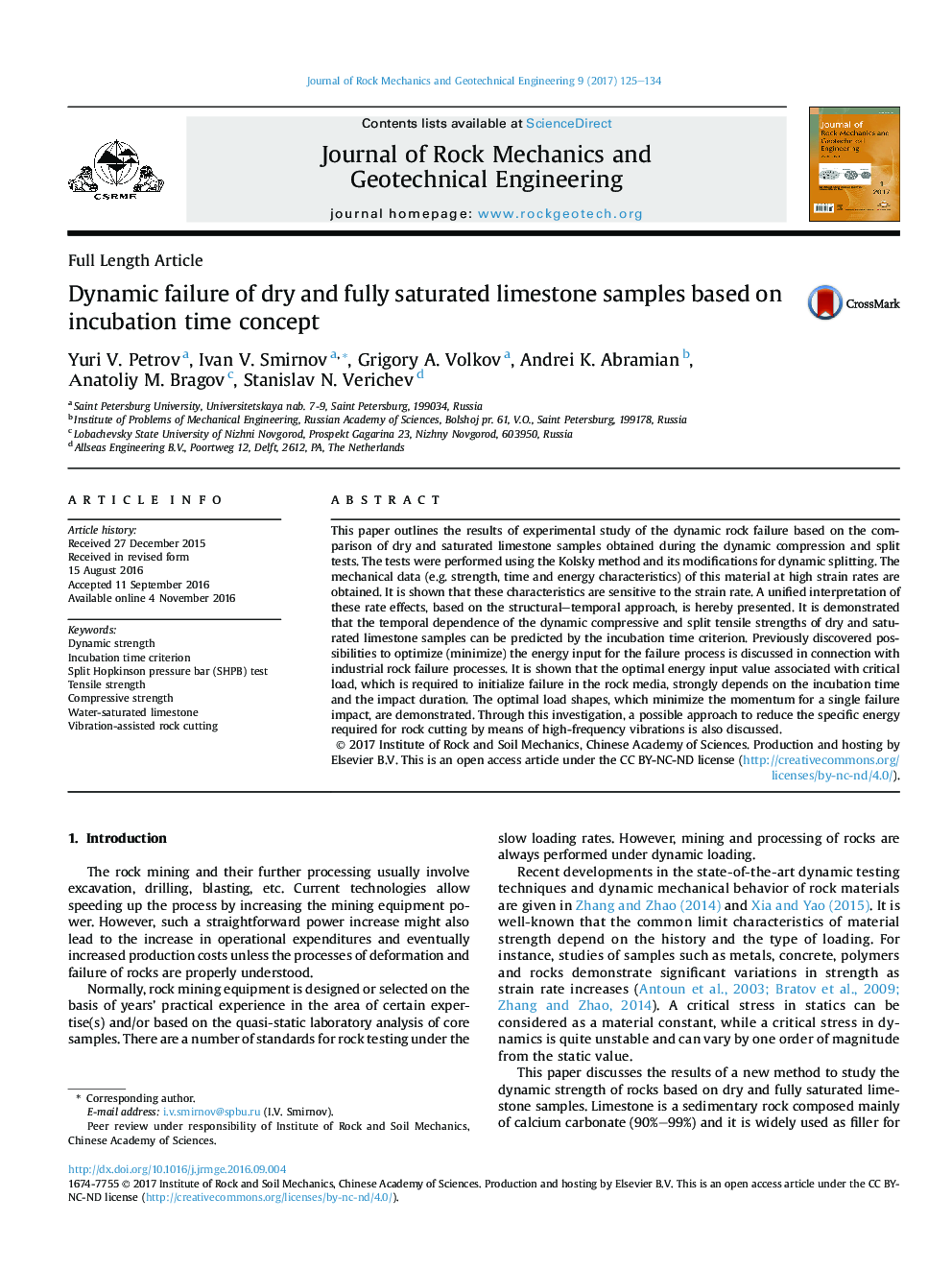| Article ID | Journal | Published Year | Pages | File Type |
|---|---|---|---|---|
| 4923773 | Journal of Rock Mechanics and Geotechnical Engineering | 2017 | 10 Pages |
This paper outlines the results of experimental study of the dynamic rock failure based on the comparison of dry and saturated limestone samples obtained during the dynamic compression and split tests. The tests were performed using the Kolsky method and its modifications for dynamic splitting. The mechanical data (e.g. strength, time and energy characteristics) of this material at high strain rates are obtained. It is shown that these characteristics are sensitive to the strain rate. A unified interpretation of these rate effects, based on the structural-temporal approach, is hereby presented. It is demonstrated that the temporal dependence of the dynamic compressive and split tensile strengths of dry and saturated limestone samples can be predicted by the incubation time criterion. Previously discovered possibilities to optimize (minimize) the energy input for the failure process is discussed in connection with industrial rock failure processes. It is shown that the optimal energy input value associated with critical load, which is required to initialize failure in the rock media, strongly depends on the incubation time and the impact duration. The optimal load shapes, which minimize the momentum for a single failure impact, are demonstrated. Through this investigation, a possible approach to reduce the specific energy required for rock cutting by means of high-frequency vibrations is also discussed.
